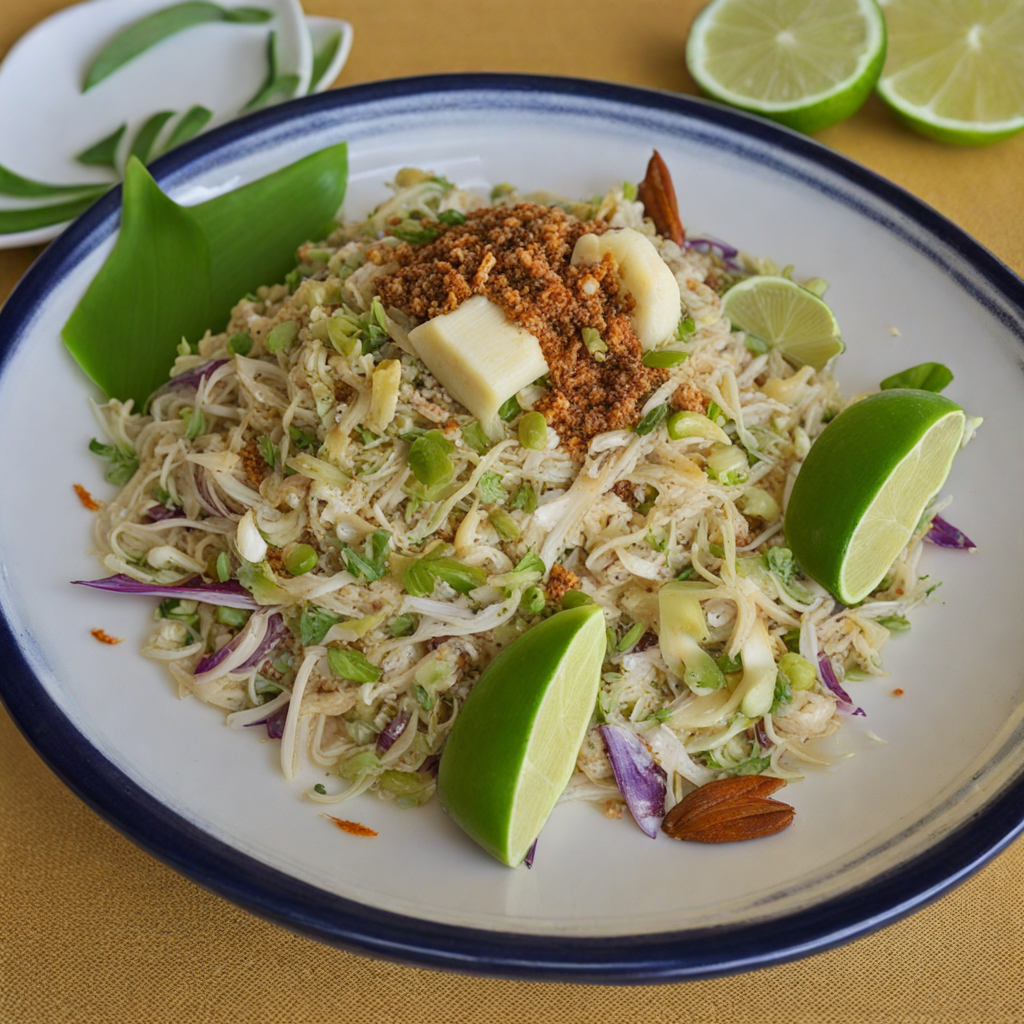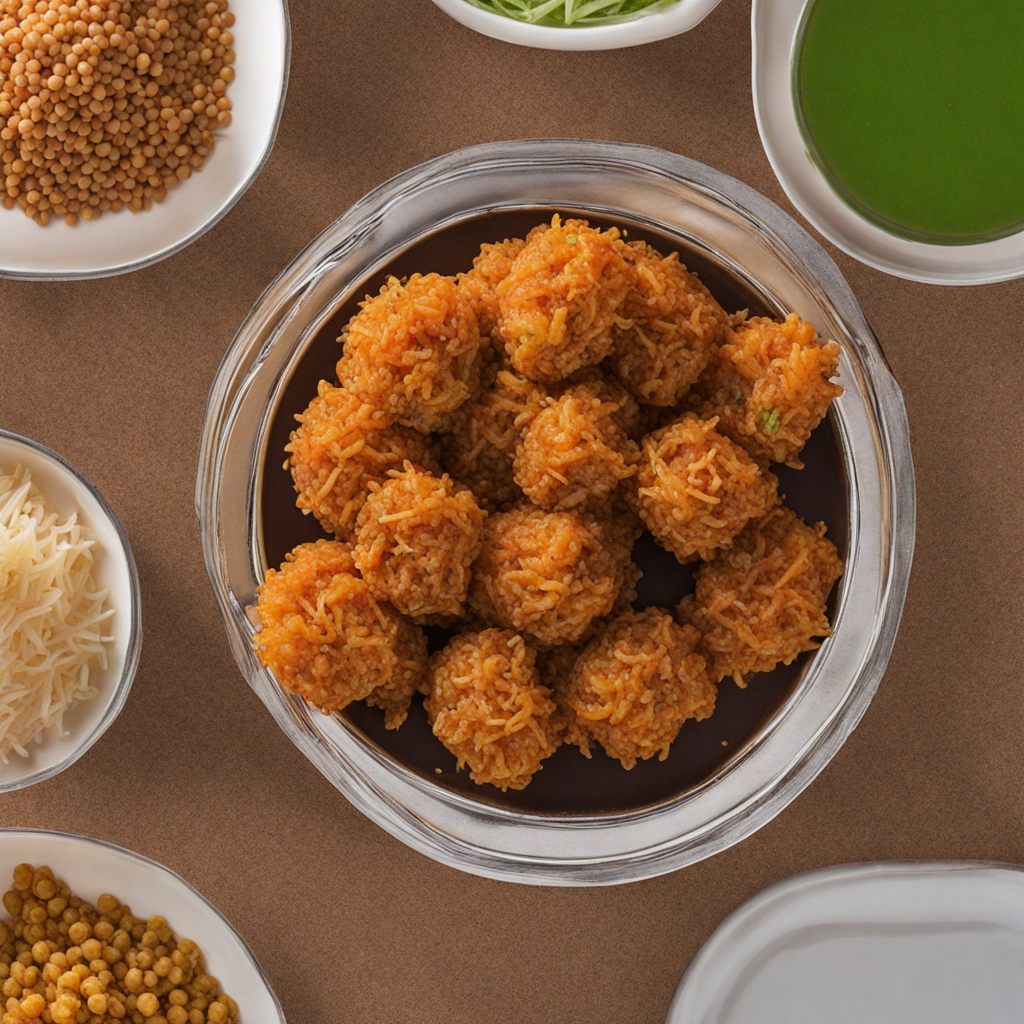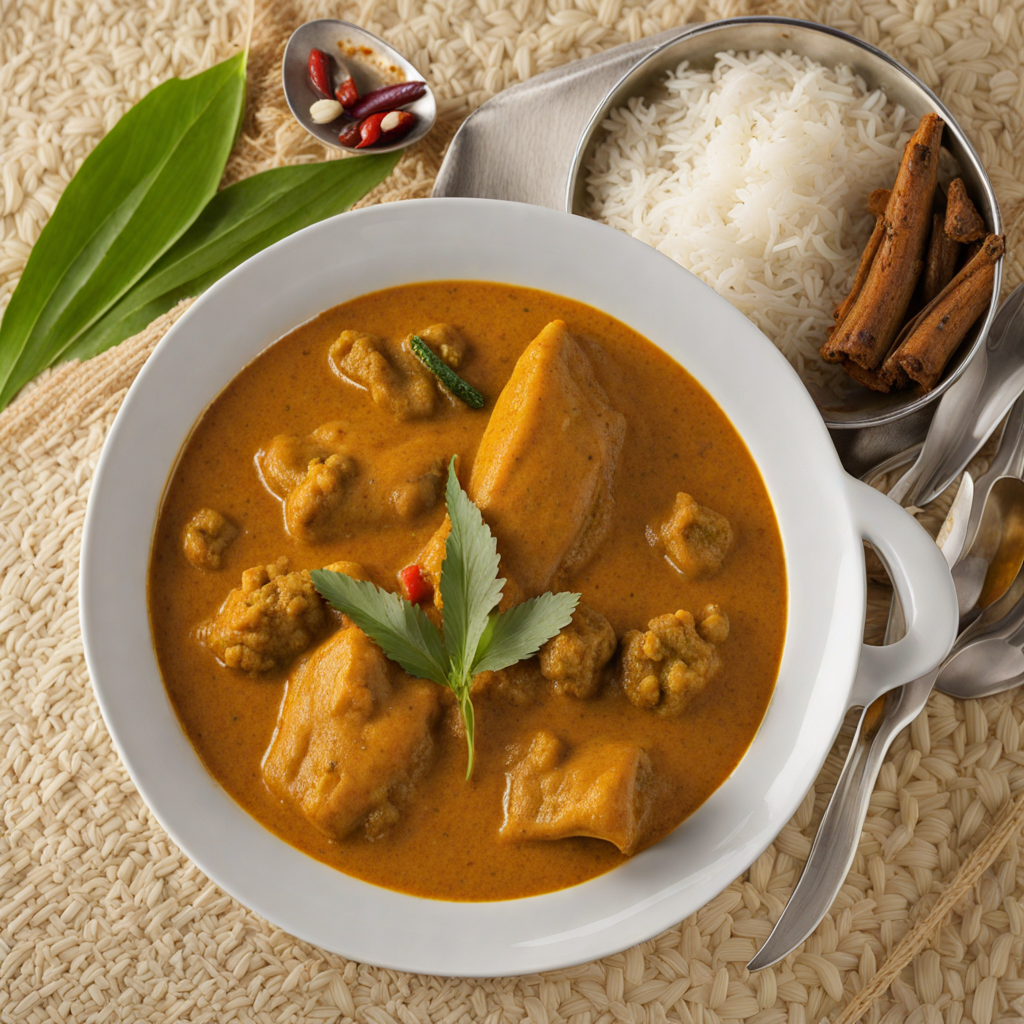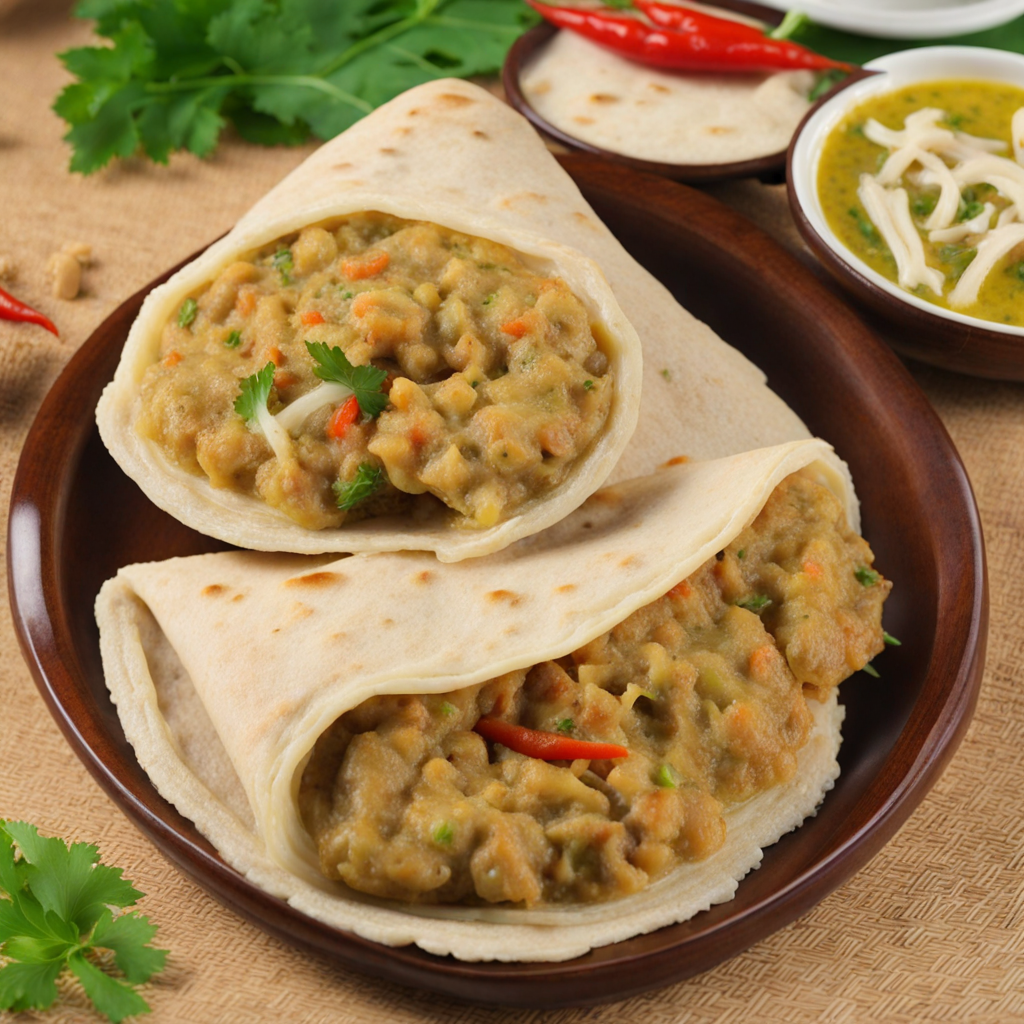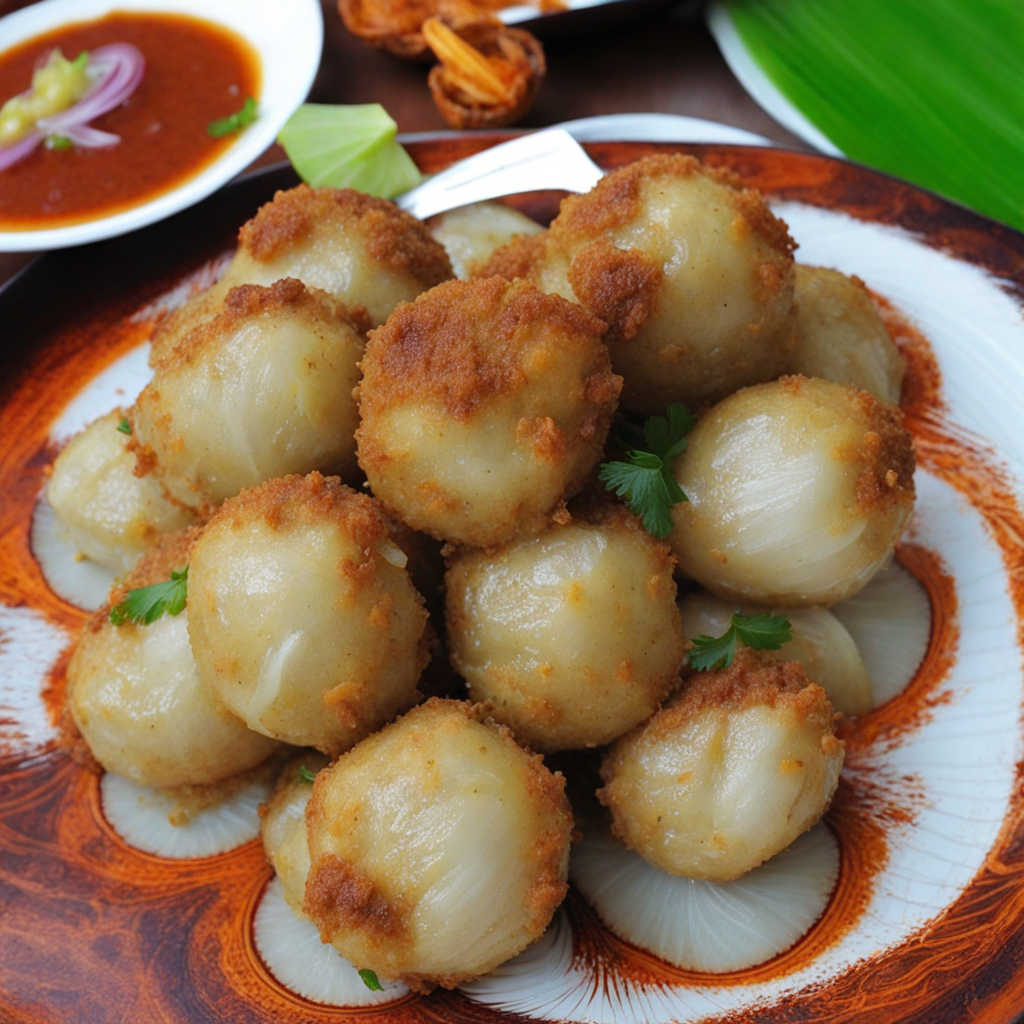Boshi Mashuni
Boshi Mashuni is a vibrant Maldivian salad that showcases the country's rich culinary heritage, combining fresh ingredients with traditional flavors. At its core, this dish features finely shredded banana flower, known locally as "boshi," which is revered for its unique texture and subtle taste. The banana flower is typically blanched to soften its fibrous nature, making it more palatable and allowing it to absorb the dressing and spices that accompany it beautifully. The salad is elevated by the addition of freshly grated coconut, which imparts a creamy richness and a natural sweetness that balances the earthiness of the banana flower. A blend of locally sourced ingredients, such as diced onions, green chilies, and fresh herbs like coriander, adds brightness and a refreshing crunch to the dish. The final touch is a drizzle of lime juice, which brings a zesty tang that enhances the overall flavor profile and makes each bite a delightful experience. Boshi Mashuni is not just a side dish; it is often served alongside grilled or fried fish, making it a perfect accompaniment to the Maldives' seafood-rich cuisine. This colorful salad embodies the essence of Maldivian cooking, where simplicity meets bold flavors, and is a must-try for anyone looking to explore the diverse tastes of this island paradise. Its unique combination of textures and flavors will leave a lasting impression, inviting you to savor the culinary traditions of the Maldives.
How It Became This Dish
The History of ބޮށި މަޝުނި (Boh Roshi) from the Maldives The Maldives, an archipelago in the Indian Ocean, is known for its stunning coral reefs, azure waters, and rich cultural heritage. Among its culinary treasures, one dish stands out for its unique flavors and significance: ބޮށި މަޝުނި, or Boh Roshini. This traditional Maldivian dish, a type of flatbread, is not merely a staple food; it embodies the islanders' way of life, their history, and their relationship with the sea. Origins of Boh Roshini Boh Roshini's origins can be traced back to the early days of Maldivian civilization. The Maldives has been inhabited for over 2,500 years, and its food culture has been shaped by various influences, including Indian, Arab, and later European traders. The islanders relied heavily on fishing and agriculture, with coconut palms and rice being fundamental to their diet. The word "Boh" refers to "bread" in Dhivehi, the Maldivian language, while "Roshini" can be translated to mean "light" or "shine." This name may reflect the bread's delicate texture and the way it complements the vibrant array of flavors found in Maldivian cuisine. The flatbread itself is made primarily from flour, water, and a touch of salt, and is typically cooked on a flat griddle, resulting in a soft, pliable bread that can be used for various purposes. Cultural Significance Boh Roshini holds a special place in the hearts of Maldivians. It is often served during communal meals, celebrations, and festivals, symbolizing unity and togetherness. The preparation and sharing of this dish foster a sense of community, as families and friends gather to enjoy the simple yet profound pleasure of breaking bread together. In the Maldivian culture, food is more than sustenance; it is an expression of love, hospitality, and identity. Boh Roshini is frequently accompanied by a variety of side dishes, such as fish curries, coconut chutneys, and vegetable sides, showcasing the rich flavors of the islands. The combination of textures and tastes reflects the diversity of the local ingredients, which are often sourced fresh from the surrounding waters and lush landscapes. During traditional celebrations, such as Eid al-Fitr, Boh Roshini features prominently on the dining table. It is a time when families come together to celebrate the end of Ramadan, sharing meals filled with joy and gratitude. The dish’s significance transcends mere nourishment; it represents the values of generosity and togetherness that are central to Maldivian culture. Development Over Time As Maldivian society evolved, so too did the culinary practices associated with Boh Roshini. The introduction of new ingredients, influenced by trade and contact with the outside world, has enriched the dish’s flavor profile. For instance, the arrival of spices from India and Indonesia has led to the incorporation of various seasonings in both the bread itself and the accompanying dishes. In the mid-20th century, as tourism began to flourish in the Maldives, the culinary landscape saw a transformation. Restaurants and resorts started to embrace traditional dishes like Boh Roshini, adapting them to cater to the palates of international visitors. This led to a newfound appreciation for Maldivian cuisine globally, as food enthusiasts sought authentic experiences during their travels. Despite these changes, the essence of Boh Roshini remained intact. Chefs and home cooks alike continue to prepare the bread using traditional methods, ensuring that the cultural heritage is preserved. The dish has also inspired new culinary innovations, with chefs experimenting with flavors and presentation while retaining the core identity of the bread. In recent years, there has been a growing movement among Maldivians to reclaim and promote traditional food practices. This resurgence is a response to the globalization of cuisine and a desire to celebrate local identity. Boh Roshini has emerged as a symbol of this movement, with local chefs and home cooks advocating for its place in contemporary Maldivian gastronomy. Modern Interpretations and Global Influence Today, Boh Roshini is not only enjoyed in the Maldives but has also found its way onto international menus. As chefs worldwide explore global cuisines, the flatbread has been embraced for its versatility. It can be used as a wrap for various fillings, a base for pizzas, or even as a vehicle for dips and spreads, showcasing its adaptability to different culinary contexts. Social media has played a crucial role in this global appreciation of Boh Roshini. The visual appeal of the dish, often paired with vibrant accompaniments, has captured the attention of food bloggers and influencers, leading to an increased interest in Maldivian cuisine. This digital exposure has fostered a sense of pride among Maldivians, as they share their culinary heritage with a broader audience. Moreover, the Maldivian diaspora has played a significant role in preserving and promoting Boh Roshini outside the islands. Communities around the world celebrate their cultural identity through food, often recreating traditional dishes for special occasions. In this way, Boh Roshini serves as a bridge connecting Maldivians living abroad to their homeland. Conclusion Boh Roshini is more than just a flatbread; it is a culinary emblem of Maldivian culture, history, and identity. Its origins are deeply rooted in the islands' rich heritage, while its evolution reflects the dynamic interplay between tradition and modernity. As the Maldives continues to grow as a global destination, Boh Roshini remains a cherished symbol of the islands' culinary legacy, inviting both locals and visitors to savor the flavors of the Maldives and partake in the timeless tradition of sharing a meal. The journey of this beloved dish encapsulates the essence of Maldivian hospitality, a celebration of community, culture, and the deep connection to the land and sea.
You may like
Discover local flavors from Maldives


